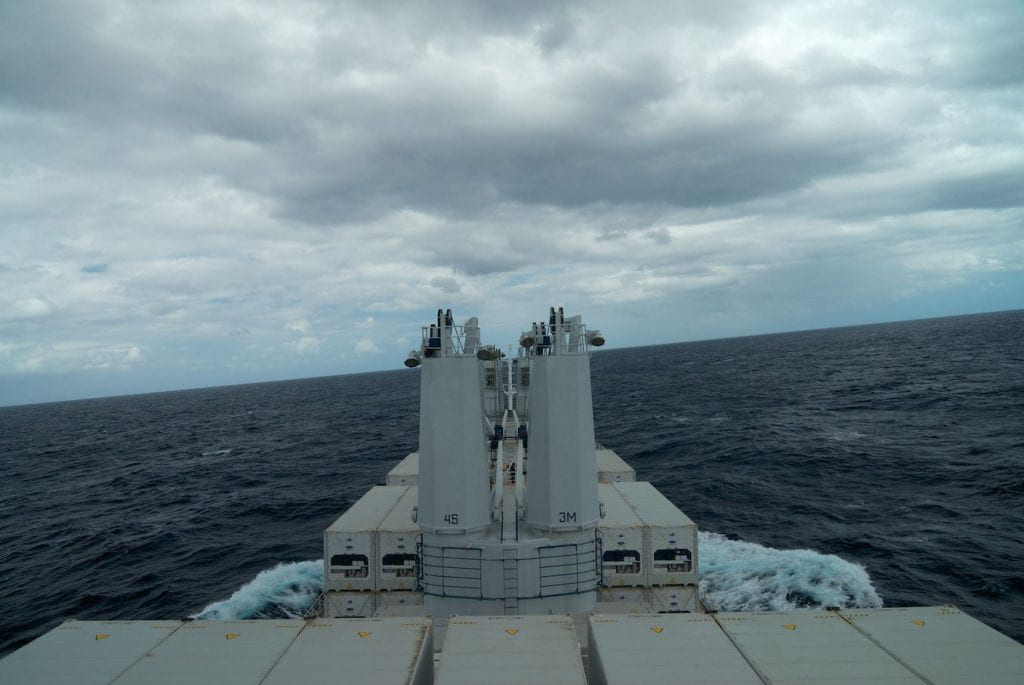In early April, I spoke to the artist Enrique Ramírez, whose work returns again and again to the ocean as a source of inspiration, a place for reflection, and a material with which to make art. Ramírez was born in Santiago de Chile, but has lived and worked between Paris and Santiago since 2010.
Ramírez told me that he feels like a Chilean artist when he is outside Chile, but that when he returns to his home country, he feels like something of a tourist. This sense of displaced identity emerges in his work: much of it has to do with the particular political significance of the sea in Chile, but Ramírez also makes art that explores travel and migration across oceans, as well as ecological problems that ignore national borders.
Here are two examples to demonstrate the multiple meanings attached to the ocean in Ramírez’s work. The first is Los durmientes (The Sleepers), a video installation from 2014. The title is a macabre play on words that refers to the bodies of those ‘disappeared’ by the Pinochet regime in Chile, which were tied to heavy rails and thrown into the Pacific from military helicopters. The installation consisted of three screens, arranged in a 180-degree arc around the spectator. Each screen played a different, 15-minute-long video: an aerial view of the ocean, a long travelling shot following an old man walking along a beach, carrying a dead fish, and a view of floating crosses. At the end, the camera drops in terrifying freefall into the water ( you can find a shortened version online here).
Océan, 33°02’47”S / 51°04’00”N (2013) is, at first glance, a very different proposition. This is a film consisting of a 25-day-long continuous shot, from a camera mounted aboard a cargo ship travelling from Valparaíso, Chile, to Dunkirk, France. The project has existed in various formats beyond this film, however, including a multi-screen installation, a book, and a website on which one can view 23 short films relating to the journey. These short films draw on, but go beyond, the long film at the work’s centre.

The way in which Océan makes visible the ‘forgotten space’ of global shipping is highly reminiscent of the film with that title by Allan Sekula and Noël Burch, and Ramírez told me that Sekula has long been one of his great sources of inspiration. Los durmientes, meanwhile, addresses some of the same topics, albeit in a more formally daring and arresting manner, as Patricio Guzmán’s 2015 documentary El botón de nácar (The Pearl Button).
Yet Los durmientes and Océan have something in common that gets to the heart of Ramírez’s interest in the sea. Both works start with film, but are not – or not just – films. Film and video projections instead become material elements of the exhibitions that Ramírez puts together. He told me that he takes the cinematic principle of montage as a starting point for his exhibitions, with the big difference, of course, that whereas the film spectator is sat in front of one screen, and has to follow the scenes and shots in an order that the director has determined, the visitor to an exhibition by Ramírez (or, in fact, to the Océan website) can choose their own path. They are, as it were, in the editing room, splicing together their own experience from the elements that the artist offers, whether those are videos, sculptures, or a sailing boat suspended from the gallery ceiling.
Ramírez hopes that this might generate a kind of dialogue, ‘as if the exhibition and the spectator were talking to each other’. In this way, though his works might make reference to specific historical events or political issues, the requirement for any prior knowledge from the spectator is superseded. ‘They might know something about Chile, or not. And if they don’t, then perhaps that work can speak to them about migration in the Mediterranean, or the problems at the Mexico-US border. It’s important for the work to be able to speak without us knowing where it comes from.’ Ramírez wants his work, like the ocean, to resist containment by national labels.
In Guzmán’s documentary El botón de nácar, we are told that ‘the act of thinking is like the ocean’: unpredictable, endlessly flowing, creating unexpected connections. This is the kind of thinking that Ramírez’s work encourages in its spectators as it takes film and turns it inside out, transforming a finished product into an element to be ‘edited together’ again with other elements of an exhibition. As befits the son of a sailmaker, Ramírez is constantly asking his spectators to reflect on their relationship to the ocean, and by extension on their relationship to each other.


